Santa Fe: D scores for mostly A-grade experience
/
Hyundai’s largest sports utility has smartened in all respects while cementing diesel dependence.
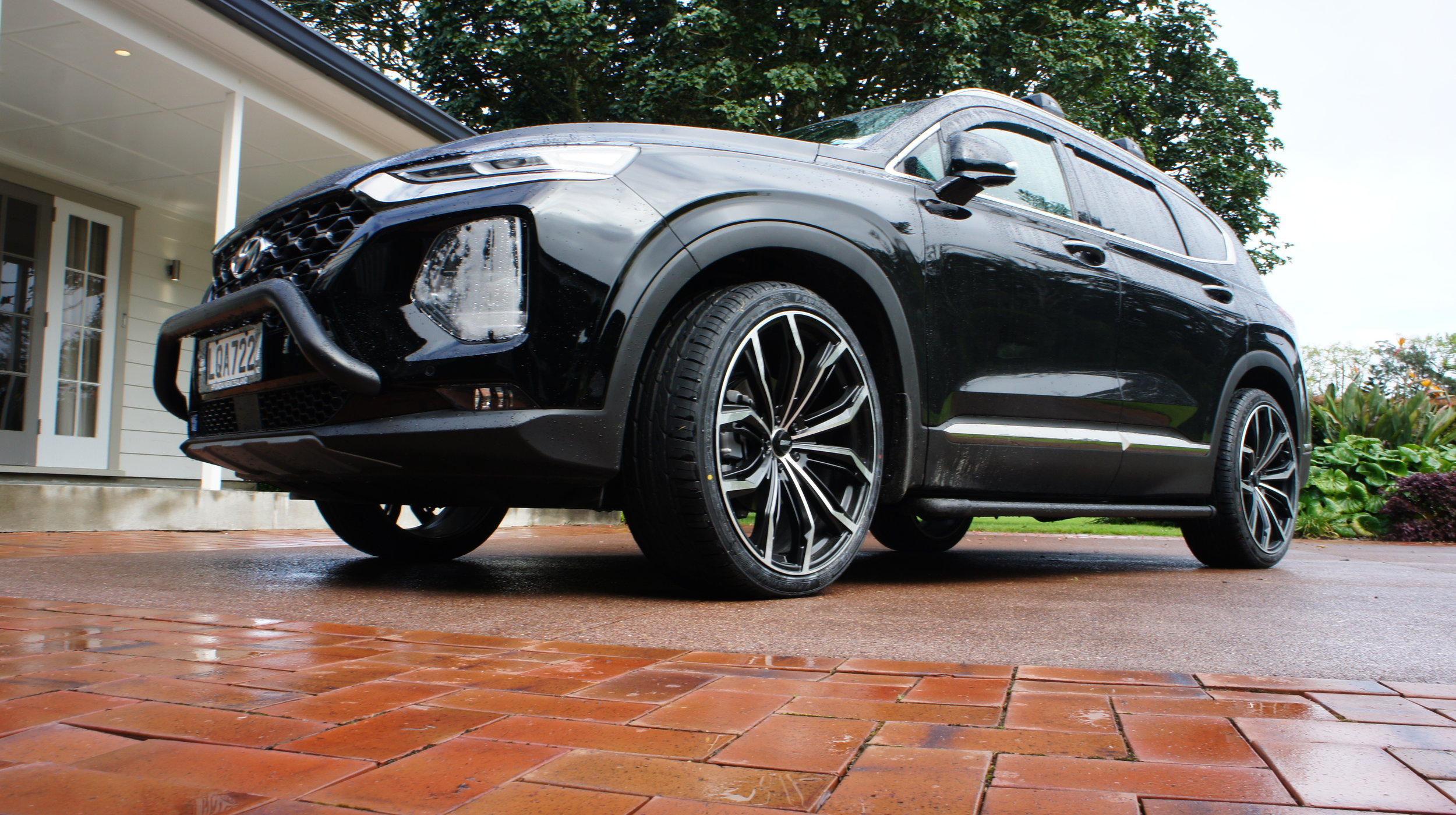

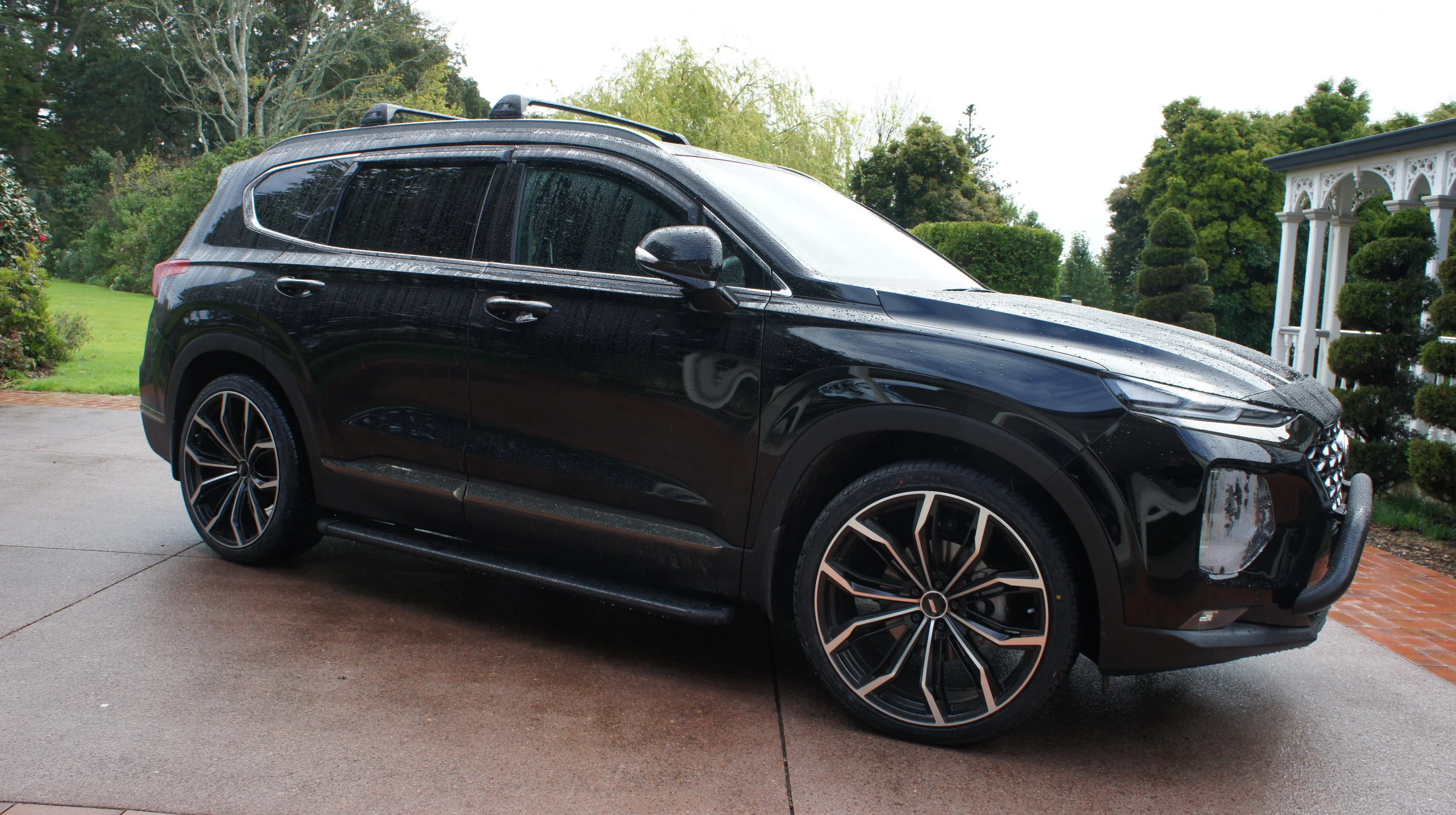
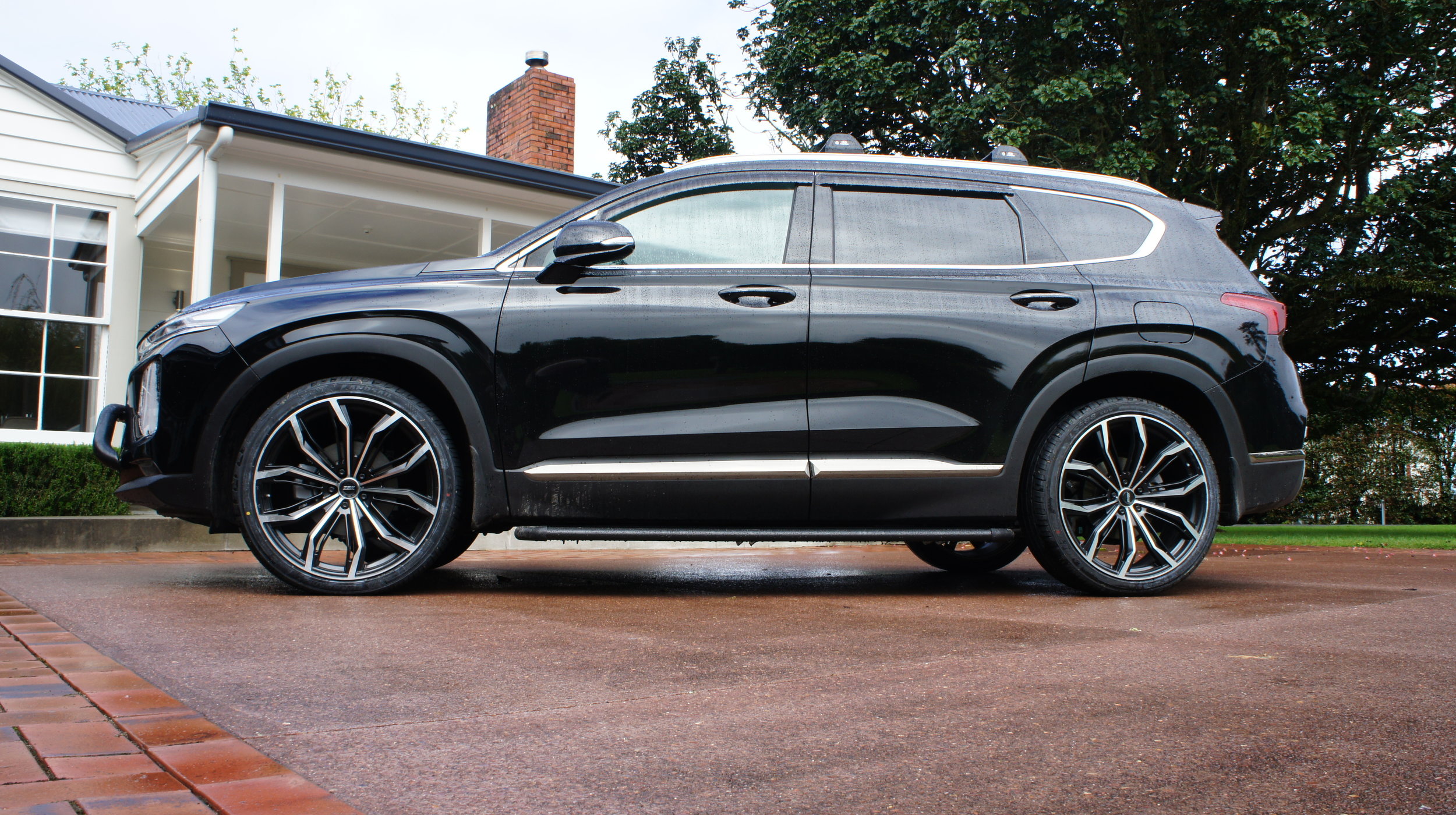
THE fuel some big-name Europeans are abdicating is set to remain the life blood of one of the country’s top-selling and best-regarded large sports utilities.
The latest edition of Hyundai’s Santa Fe, that has just released in a faddish new shape with alluring extra tech and a fresh underpinning, offers with improved versions of the 2.4-litre petrol and 2.2 diesel four-cylinder drivetrains that came with the previous line.
That only the latter fronted during a just concluded media launch that took the car on an overnighter from Auckland to the Hokianga and return was blamed on a slow boat from South Korea.
Being denied both drivetrains to sample might seem a pity but, honestly, few potential customers will likely mind.
In the previous line, here for six years, the diesel was far and away the favourite powertrain – accounting for up to 95 percent penetration. That trend is expected to continue in the new one, which now in uprated common rail format not only pumps a healthy 147kW at 3800rpm and 440Nm at 1750-2750rpm but also divests marriage with the previous six-speed automatic for a new eight-stager partnership.
Hang on … ongoing diesel dominance when Dieselgate has made this fuel such a dirty word?
Well, here’s the thing. Hyundai NZ boss Andy Sinclair has no doubt his customers are keeping up with the VW Group travails yet there’s no sign of them considering abdicating a diesel compression addiction.
When asked if any reverberations from the sorry saga have been felt by his firm, he shakes his head.
“It’s a pretty simple question. ‘No’ is the answer. We’ve had no customer feedback that is negative around our diesel range.”
That’s not to say they’re so committed as to forget about petrol. For sure, head office in South Korea has decreed that this TM line will do without the old range’s V6 engine, a strategy that addresses enhanced efficiency targets and enhances potentials for a new direction. Cited for entry in a couple of years is a 2.0-litre turbo four that replaces the 2.4 in orthodox usage and also becomes the petrol partner for a plug-in electric drivetrain also said to be on the cards.
The latter will further strengthen the local ohm gameplan that presently sees this brand as the strongest sub-$100,000 sector EV provider with its Ioniq hatch and fully battery-compelled Kona.
However, with Hyundai’s three sports utility wagons – Kona, Tucson and Santa Fe – achieving 70 percent of the brand’s local market sales, and despite the top-selling SUV derivative being front-drive petrol Tucson, it makes sense to keep diesel running to the fore with the largest of those contenders.
Even so, the 2.4 runs very much as an as understudy choice in the three new Santa Fe editions: Entry, Elite and Limited.
There’s good reason why the 2.4 is a cheaper buy-in – by $7000 for the entry edition and by $6000 for the Elite and Limited. It deserves to be, because even though the diesel and petrol variants are lookalikes in styling and specification, they are bound to be well-separated in performance.
The direct-injection petrol unit delivers substantially less power and torque (138kW at 6000rpm; 147kW at 3800rpm) and marries to the old six-speed auto. That affects more than outright pace. In addition to being less energetic, the petrol is less efficient, with average economy of 9.3 litres per 100km and 217 grams of CO2 per kilometre versus 7.5L/198g.
It will also very likely have to work harder to propel a new bodyshape that, though not heavier (at 1785kg in lightest form to 1995kg forb the Limited) is certainly larger, at 4770mm long, 1890mm wide and 1705mm tall.
Which all means it will likely be less refined than the diesels, which when driven in $75,490 Elite and $82,990 Limited CRDi formats (again, the $66,990 entry was simply AWOL) were impressive as much for their quietness as for their sheer oomph, with only some roar on coarse chip from the 235/55 R19 rubber breaking the serenity.
The performance is but one reason why the diesels will continue to deliver Hyundai with a very strong contender in a sector that includes many rivals.
It faces similar seven-seat all-wheel drive vehicles such as the Kia Sorento, Mazda CX-9 and CX-8, Nissan Pathfinder, the Toyota Highlander plus more off-road-biased utility-based vehicles such as the Ford Everest, Holden Trailblazer, Isuzu MU-X, Mitsubishi Pajero Sport and Toyota Fortuner.
All models this time feature a smart new mode-selectable all-wheel-drive. The HTRAC active on-demand variable torque control all-wheel drive system is rather clever. It biases drive toward the front wheels on seal but has ability to deliver a 50/50 front/rear span and also a lock mode. That might suggest it has elevated competence for off-road work, but a brief beach excursion left me thinking that it would be imprudent to become too adventurous.
The first sign of the set-up’s limitations on fine sand came after we’d parked up on what seemed to be a firm section for photographs; setting off again, I must have applied a tad too much throttle, and immediately began to dig in. Fortunately, some gentle rocking got me out.
But ahead, another obstacle: We’d come down a wee sandhill to get here. The ascent wasn’t steep, but again it was soft: I took first go and made it, but not without plenty of throttle.
It was a touch-and-go effort, with a fair bit of wheelspin and some banging about. The next vehicle bogged down and, when attacking again at much higher speed, was the first of three to subsequently bottom out with such force as to destroy the undertray. Turning off the traction control made it easier but the road-tuned rubber and the modest ground clearance – just 185mm, same as previously but low for a SUV – and approach and departure angles were patently hampering progress here.
On seal and even a touch of gravel, from highway to a decent dose of winding secondary roads, no such concerns. The new body has an almost 15 degree in tensile strength, while torsional stiffness has increased by a similar amount, which helps.
Also contributing, we’re told, the fine-tuning of the fully independent, MacPherson strut front and multi-link rear suspension undertaken by the Hyundai Australia chassis development team, in conjunction with a specialist from damper supplier ZF SACHS and an engineer from head office.
Thousands of kilometres of testing over many surfaces saw the team evaluate 27 front damper builds and 22 rear damper builds, and two front and three rear spring rates, to attain a tuning that is hard to fault.
Even though family-first consideration means this model has to put comfort first, it’s not at all bad at corner-carving and, though certainly large enough to fill a lane, it’s not ponderous in feel – at least not with just two adults and modest luggage aboard. It might change with every seat filled.
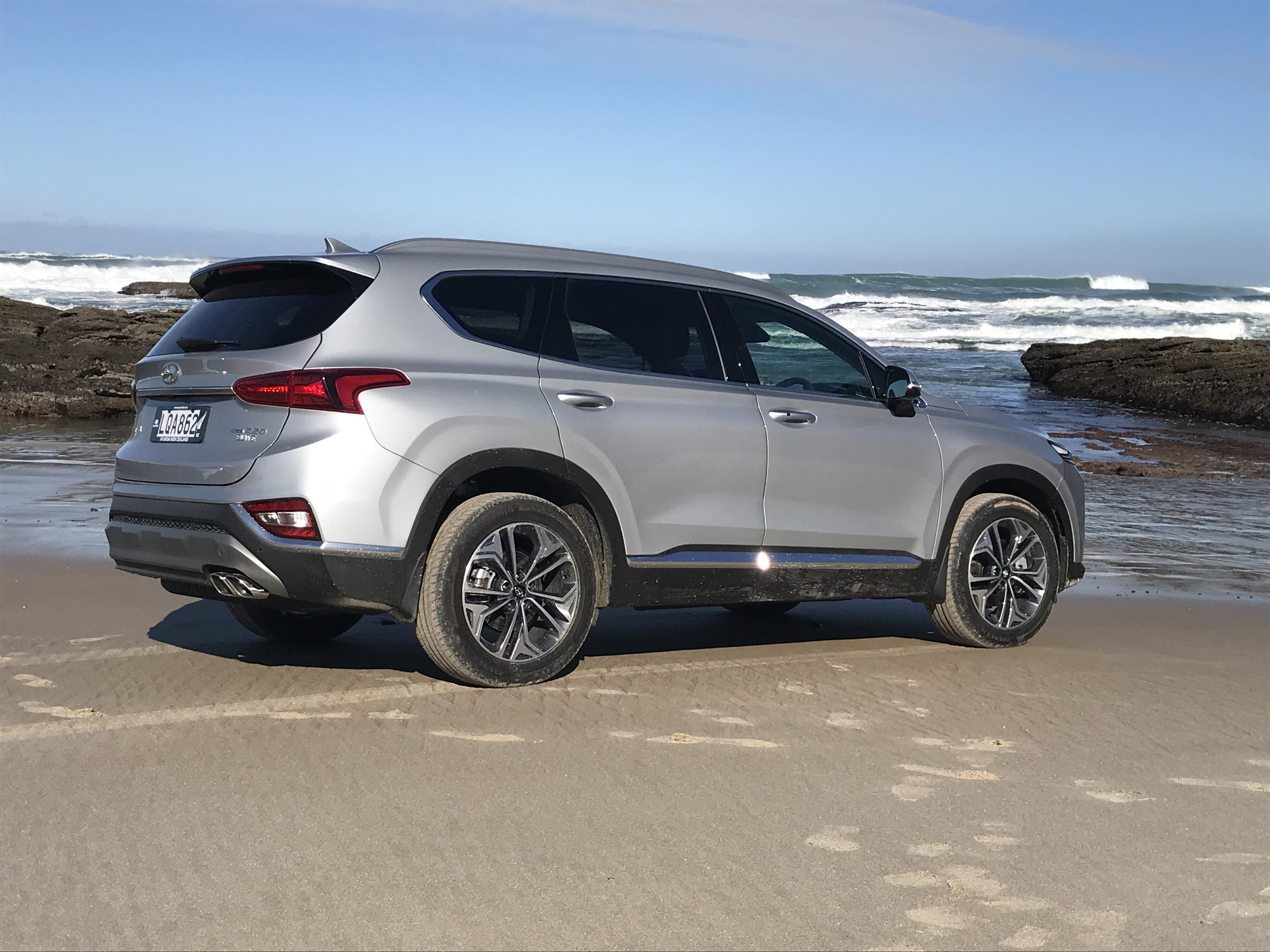
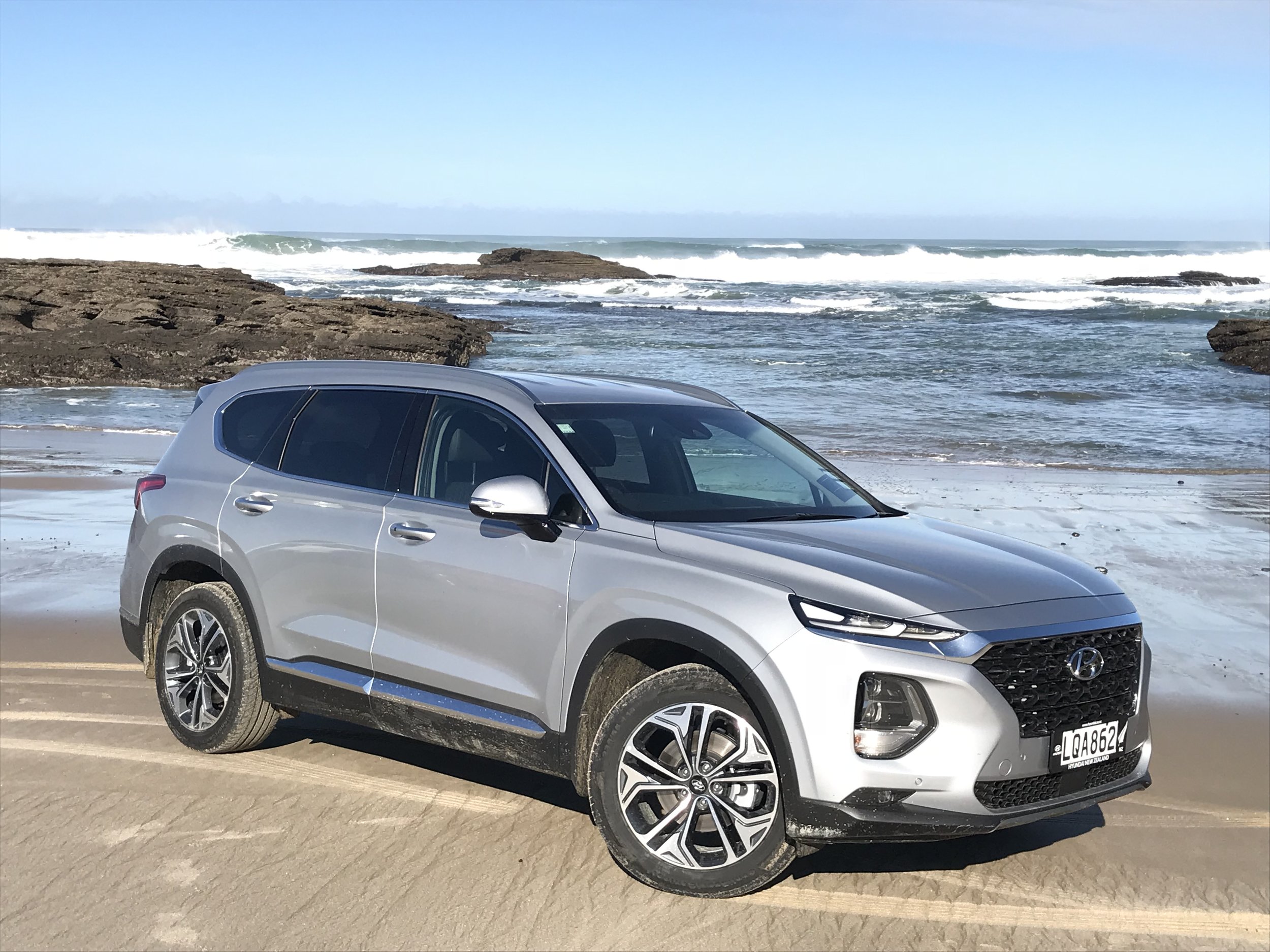
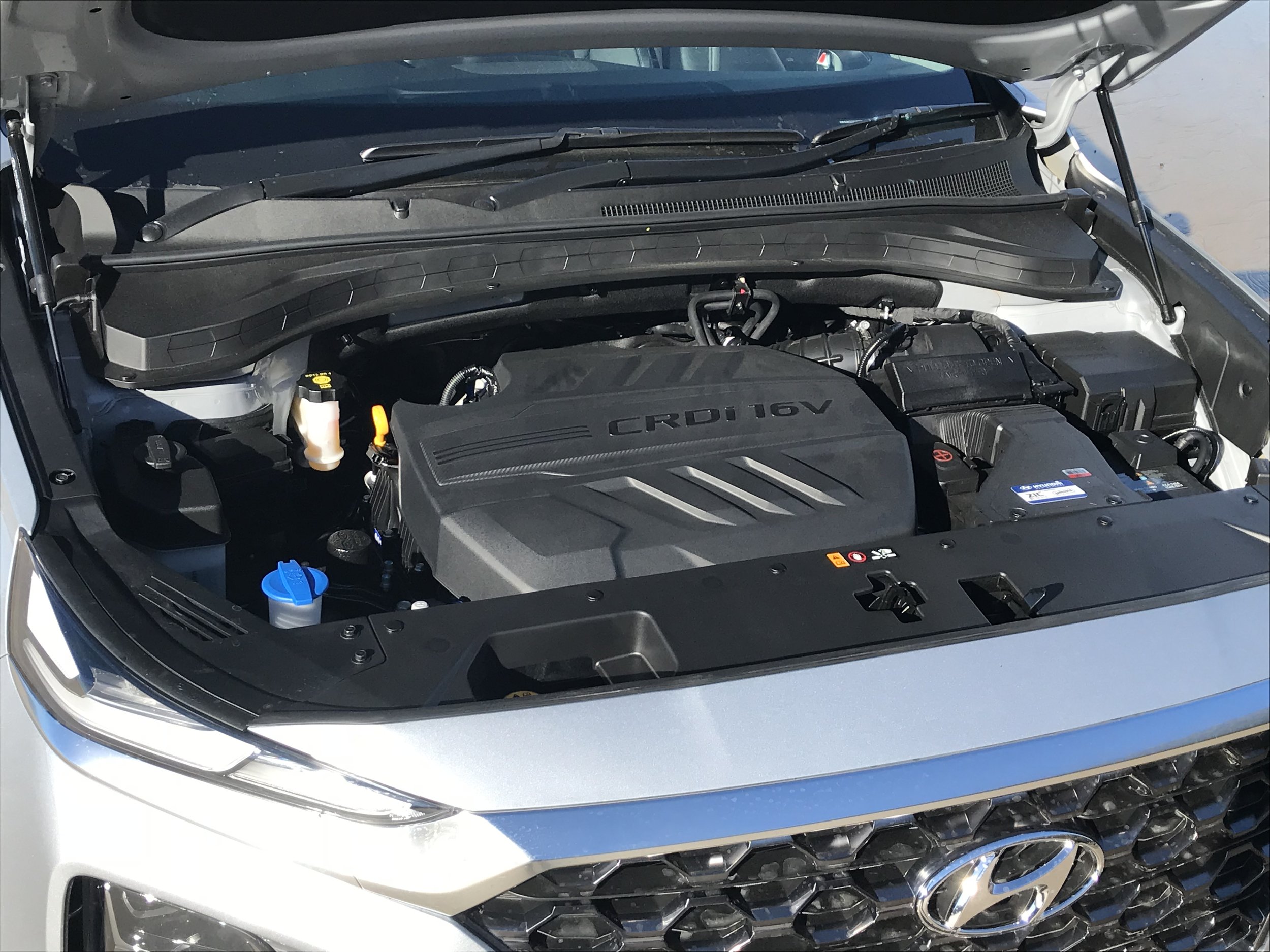
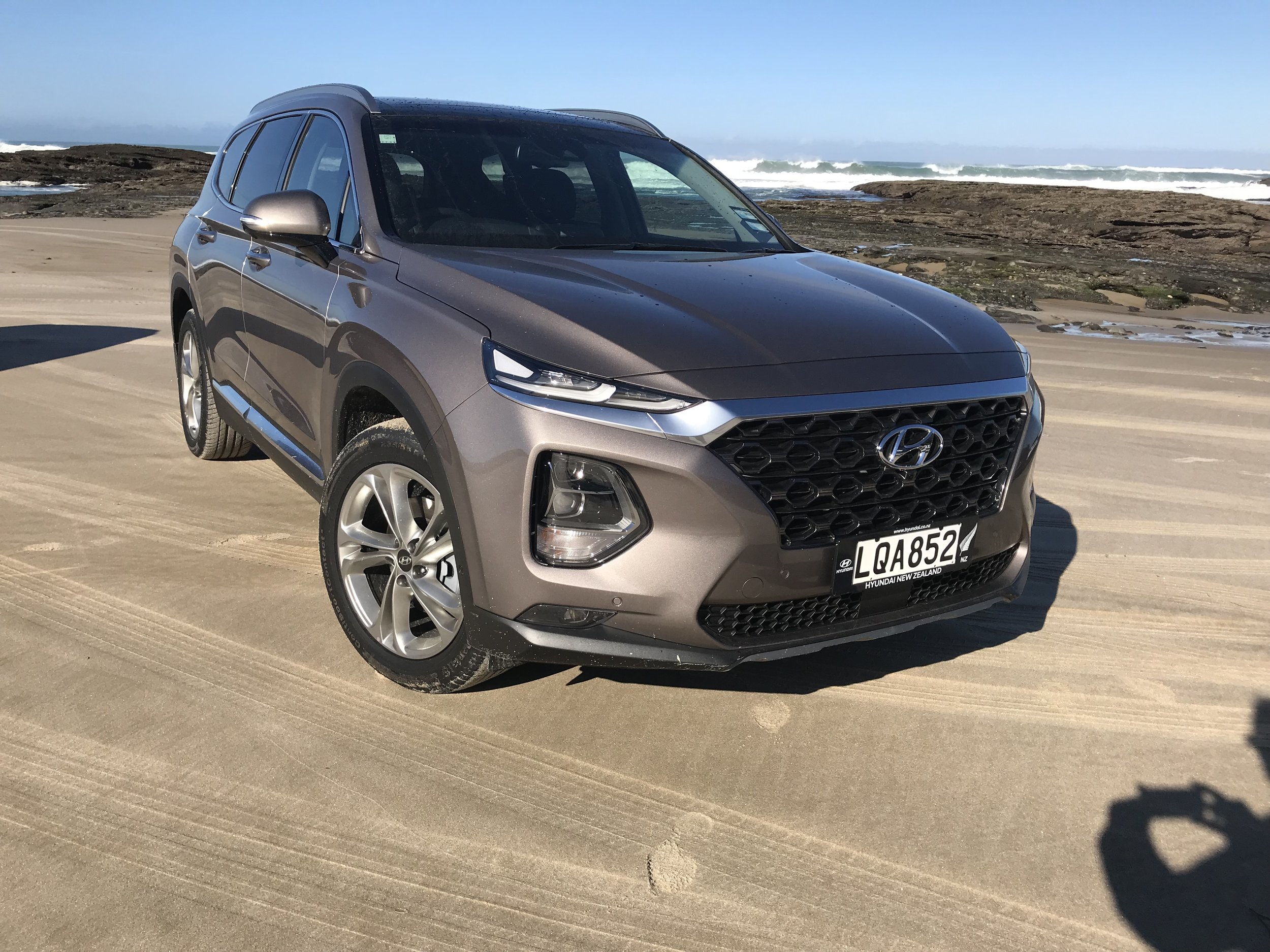
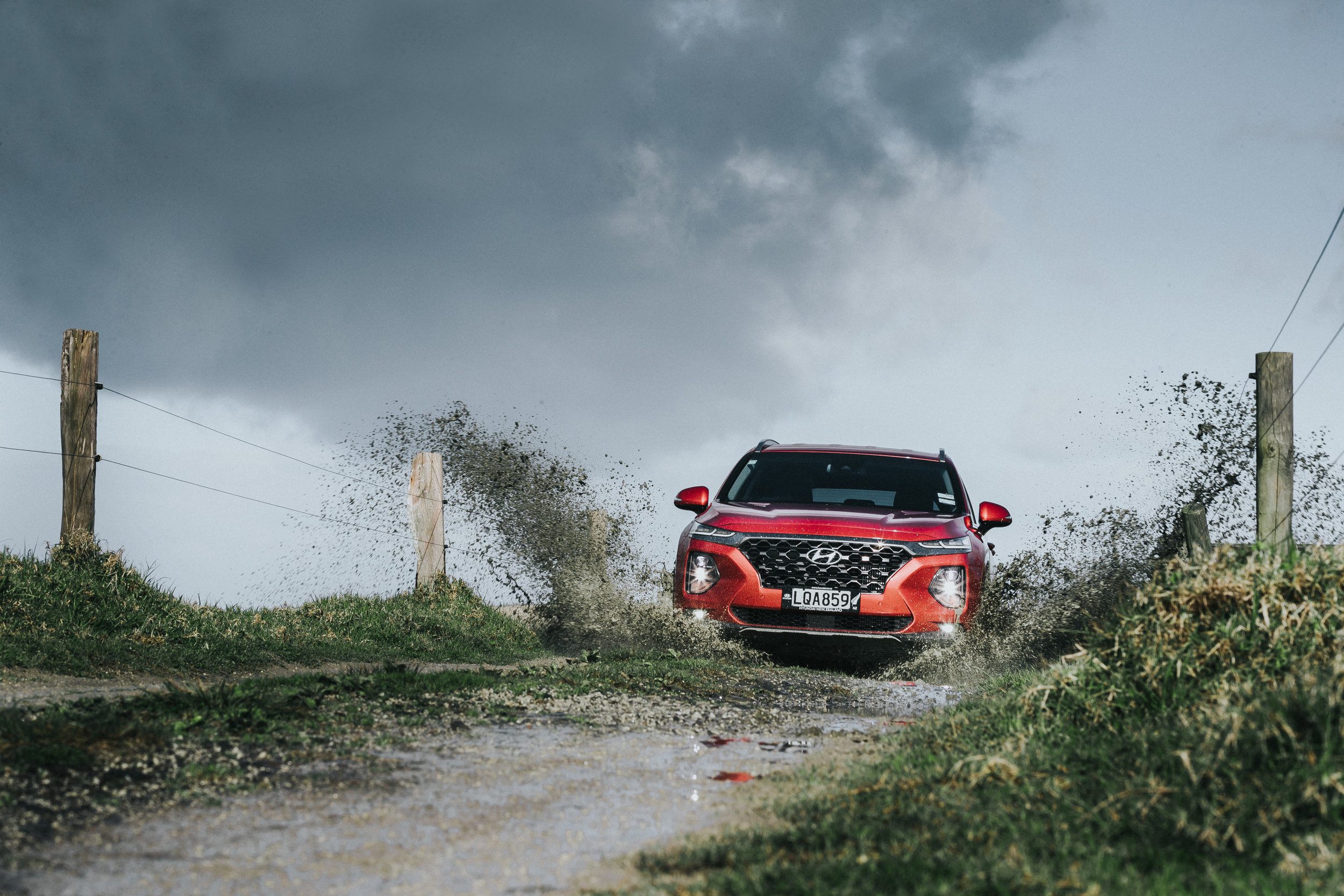
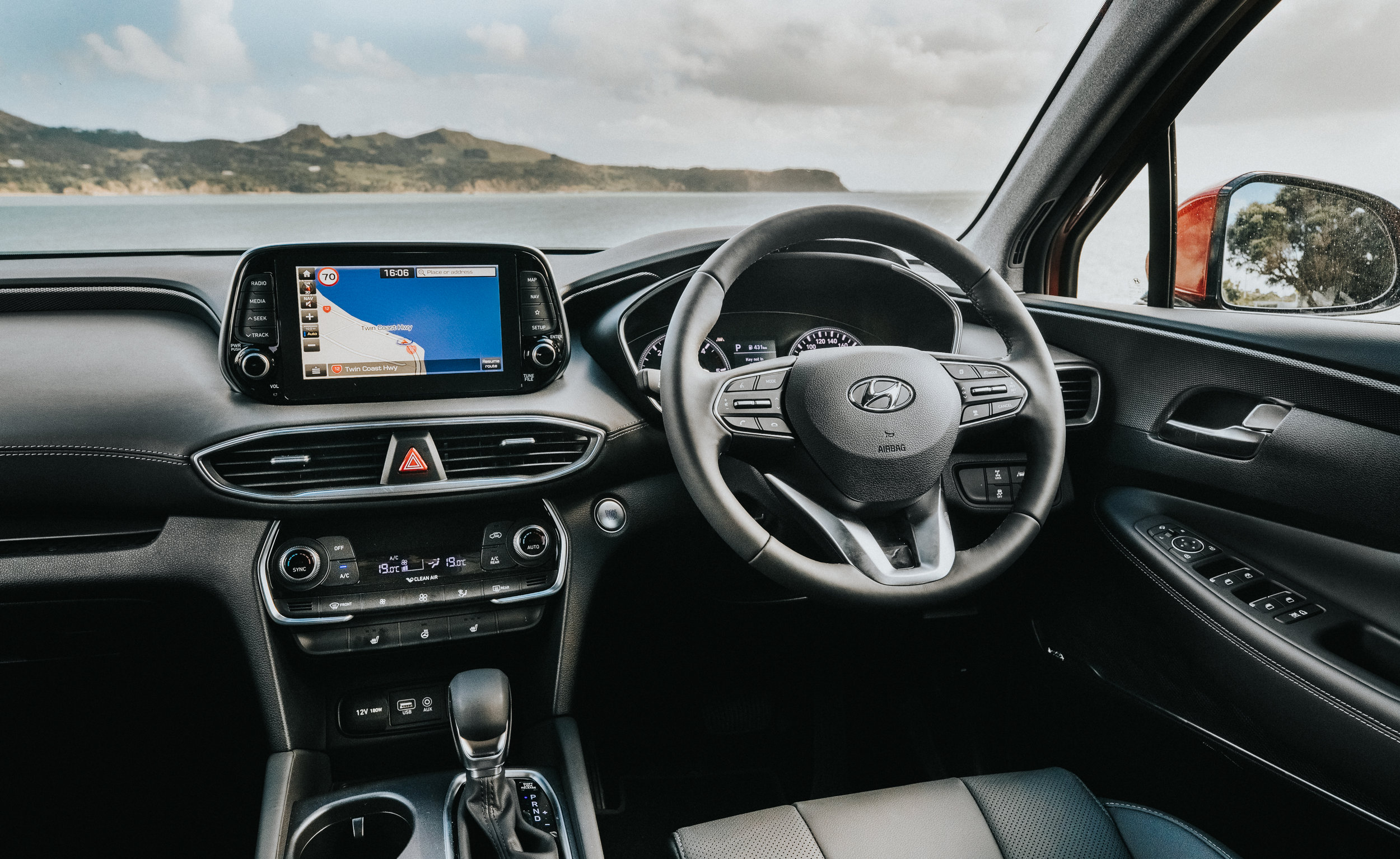

As we drove it though, it shone. Body roll is very nicely controlled and the suspension tune is above average; being good at soaking up potholes and bumps yet not at all soggy. The Continental rubber offers excellent grip – perhaps the Elite’s taller sidewalled tyres are better at suppressing surface texture than the top model’s low-profile rubber - but the AWD does a good job of apportioning traction in either application.
Santa Fe debuts a new steering system that uses a rack-mounted electric power-assistance system - as opposed to the column-mounted system found in the previous-generation Santa Fe. Hyundai says this provides better steering feel. There was no opportunity for an old-new comparison, but in isolation it did seem to deliver decent weighting and feedback.
The HTRAC switching between the various drive modes has tangible effect on chassis behaviour. In Eco mode, the gearbox is laidback and torque is mostly apportioned to the front wheels, in Comfort mode up to 35 percent goes to the rear wheels and in Sport – where the throttle is sharper and gearshifts much snappier - up to 50 percent is sent to the rear wheels. Eco and Comfort are fine for general touring, but you might prefer Sport for tight roads, as it reduces understeer and generally makes the car feel tighter and livelier. There’s also a Smart mode that learns driver behaviour and adapts throttle/transmission responses to suit. I probably didn’t enact it for long enough to enjoy the full benefits.
The engine also did a good job flying the flag for a black-marked technology, providing strong performance from low in the rev range and working well with an auto so smooth that, for the most part, you just cannot tell what gear it has engaged. It’s less fussy than some other big count gearboxes, too. The availability of hand-shifters is nonetheless welcome because it allows better access to the engine’s bottom-end grunt. Either way, it pretty much never has to rev harder than 2000rpm, even when attacking hills. Overtaking was fairly effortless, so too low-speed sudden acceleration. It’s easy to like.
Given the muscularity, it seems a bit sad that towing capacity is only 2000kg with a braked trailer, with a maximum down ball weight of 100kg. That can be increased to 150kg with the additional heavy-duty suspension kit; but will that satisfy trailer and boat towers?
The model’s new design maxes on latest styling trends but even more on space. Leg and head room in the first row is generous and second-row leg and toe room are also decent, though head room is a little limited with the panoramic sunroof fitted to the Limited. The second row slides and reclines to offer extra accommodation to the third row, which though more generously proportioned (more room and airier, through the back window size being much enlarged) and better provisioned than previously – occupants achieve air vents and fan speed controls in addition to cupholders - is nonetheless still a space suited mainly for pre-teen kids.
Access the third row is via what Hyundai calls a one-touch ‘walk-in switch’ – in other words, one switch allows the second-row kerb-side seat to fold and slide. The third-row seats can be easily pulled into position from the cargo area via straps.
With all the seats folded there’s a flat cargo floor and the cargo area has four tie-down hooks, unfortunately in plastic rather than metal. Cargo capacity comes in at 130 litres behind the third row and 547L with the third row stowed. It then expands to 1625L when the second row is moved out of the way. Beneath the floor is a full-sized spare tyre.
SUVs that cut a car-like dash are becoming quite common. Santa Fe certainly looks good. The split headlight design first seen on Kona transfers well to its big bro and even though the grille is quite large, it also looks in proportion. The side and rear profile are just as well defined; overall it has a genuine premium premium feel. One strange styling touch affects the rear lamp display; the main lights are in trendy LEDs, yet the indicator still uses an incandescent lamp. Overall, though, it’s strikes a more elegant pose than its predecessor, which itself was not too bad looking.
The interior continues that premium push; soft-touch material on the dashboard and centre console surrounds divert attention from the harder plastics in other places. The driver’s seat is commodious and comfy and forward visibility is good, thanks in part to the narrow A-pillars and small quarter windows, which allow you to see to the sides ahead of the exterior mirrors.
Santa Fe adopts a new dashtop infotainment system that measures 7.0 inches on the entry and 8.0 inches on the more expensive options. The entire range includes Apple CarPlay and Android Auto functionality, while 8.0-inch infotainment systems get inbuilt satellite navigation, which offers a clear display but is lets itself down with destination inputting, in that when asked to plot a route to a city or town, it won’t obey until also given a specific street address – not useful if your familiarity isn’t that strong. A simple ‘town centre’ option would be helpful.
The Elite and Limited include a Qi wireless phone charger for added convenience, but fall short of tailoring in Bluetooth linked phone app hook-ups, so to achieve those while also recharging you need to use the USB plug-in: And there’s just one specifically to serve the front seats. The Limited provisions a 7.0-inch TFT screen ahead of the driver, in addition to a head-up display that provisions navigation and speed information, plus various driver assistance and safety features. Even at full brightness, the display is barely legible to anyone wearing polarised sunglasses, unfortunately.
The gen four line is still awaiting an ANCAP safety score – the testing has been undertaken by NCAP in Europe but the score is being withheld for a few more weeks, we’re told. Safety certainly seems a big priority with a reverse-view camera and rear parking sensors standard across the range, while the Elite picks up front parking sensors and the Limited gets a 360-degree-view camera and front parking sensors.
The entire range comes with autonomous emergency braking (AEB) that works up to 90kmh for pedestrians, cyclists and vehicles, and up to 160kmh for just vehicles. The system also includes radar cruise control (with stop and go functionality), blind-spot collision avoidance, rear cross-traffic alert, driver-attention warning, lane-keep assist and a tyre pressure monitor.
Elite and Limited adopt some tech that will likely be appreciated by parents of young children.
One is a segment-first technology called Rear Occupant Alert. This works by issuing a reminder to the driver to check the back seat if it detects pressure on the seat or movement. If the driver still gets out of the car and locks it, the vehicle will then alarm – by loudly tooting the horn - after a set period to alert others to an occupant remaining in the rear seat.
Also niftily sorted is a secondary role for the blind-spot collision avoidance. In addition to its orthodox role of preventing the driver from moving into another lane if there is a vehicle present, it picks up a another function – again unique to Hyundai – in that it locks the rear doors if a passenger tries to exit the vehicle when another vehicle is approaching. That’s a feature surely worth kids-safe appreciation.
Hyundai has also stepped up the game on the connected vehicle front with the introduction of Hyundai Auto Link and Auto Link Premium. It's a connected vehicle system that allows the owner to connect to the vehicle remotely using their smartphone.
That connection then allows the owner to check the status of the vehicle, remotely lock and unlock, and even remotely start the car to maintain climate control. The Elite picks up the base, Bluetooth-controlled, set-up but can be upgraded to the Limited’s more sophisticated system, which requires a SIM card, in this instance provisioned by Spark. There are a prevalence of actions that perhaps only geeks will bother with, yet it is an insight into how cars can become remotely commanded and overseen; for instance, you can check out where it has been at what speed and establish a geofencing option. The cost of that connectivity is covered by the initial warranty; from that point, it’s over to owners.
All in all, then, the Santa Fe represents not only a big step over a well-regarded predecessor but also lifts its game within the broader sector. That’s not to say it has a cruisy future. As good as seems on first introduction, with exception of the connectivity and those child-minded safety assists, there is little it does operationally that is exceptionally different. The Mazda CX-8 is such an especially obvious competitor for the Elite and Limited diesels you’d be prudent to directly compare them.















